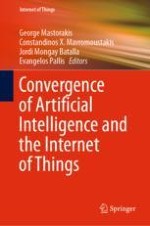This book gathers recent research work on emerging Artificial Intelligence (AI) methods for processing and storing data generated by cloud-based Internet of Things (IoT) infrastructures. Major topics covered include the analysis and development of AI-powered mechanisms in future IoT applications and architectures. Further, the book addresses new technological developments, current research trends, and industry needs. Presenting case studies, experience and evaluation reports, and best practices in utilizing AI applications in IoT networks, it strikes a good balance between theoretical and practical issues. It also provides technical/scientific information on various aspects of AI technologies, ranging from basic concepts to research grade material, including future directions.
The book is intended for researchers, practitioners, engineers and scientists involved in the design and development of protocols and AI applications for IoT-related devices. As the book covers a wide range of mobile applications and scenarios where IoT technologies can be applied, it also offers an essential introduction to the field.
